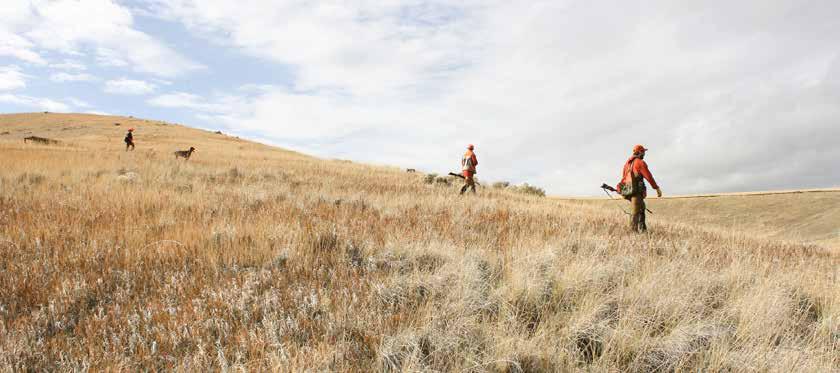
3 minute read
BHA HEADQUARTERS NEWS
HEADQUARTERS NEWS
Advertisement
Legislation introduced in the U.S. Senate by Sen. Ron
Wyden (D-OR), the North American Grasslands Conservation Act, would authorize the investment of $290 million annually in grants to incentivize the voluntary conservation of grasslands and the sagebrush steppe, among the most valuable – and most threatened – ecosystems in North America.
Relied upon by sportsmen and women, landowners, tribal nations and rural communities, grasslands and sagebrush landscapes are critical to a range of wildlife species, including mule deer, pronghorn and bison as well as upland birds like bobwhite quail. Yet the future of these resources is uncertain; 50 million acres of grassland habitat have been lost in the last decade. Consequently, the bill would create the first-ever North American grassland conservation strategy for their protection and enhancement, drawing from and coordinating existing regional conservation plans and frameworks including Tribal Conservation Plans, National Resources Conservation Service’s Working Lands for Wildlife framework and State Wildlife Action Plans.
Backcountry Hunters & Anglers is working in partnership with a broad coalition of organizations to advance the legislation. BHA President and CEO Land Tawney welcomed the bill’s introduction, highlighting its potential impact to places and species cherished by sportsmen and women.
“When we get this bill across the finish line, the implications for grasslands and the sage steppe will be tremendous,” said Tawney. “Look no further than a similar piece of legislation, the North American Wetlands Conservation Act, or NAWCA, for evidence. Since its passage in 1989, NAWCA has been responsible for the conservation of more than 30 million acres of wetlands, benefiting waterfowl, fisheries and hunters and anglers. This new legislation would give us the tools to conserve grasslands in the same way.
“Together we have the power to create an indelible legacy for our nation’s grasslands habitat, the wildlife that relies on it, and our outdoor traditions,” Tawney continued. “BHA is proud to stand side by side with so many of our partners in conservation in support of this effort, and we thank Senator Wyden and other foresighted Senate leaders for their determined efforts to advance the North American Grasslands Conservation Act. We have much to do to complete our work here, and this was a great step in that direction.”
In addition to BHA, conservation organizations including Pheasants Forever and Quail Forever, Theodore Roosevelt Conservation Partnership, National Wildlife Federation, North American Grouse Partnership, World Wildlife Fund, Izaak Walton League of America, Wildlife Mississippi, National Deer Association, Land Trust Alliance, Native American Fish and Wildlife Society, National Bobwhite Conservation Initiative, American Bird Conservancy and the Buffalo Nations Grasslands Alliance have promoted this effort since 2020.
LATEST ON THE PODCAST & BLAST
In episode 133 of BHA’s Podcast & Blast, Hal Herring talks with BLM Director Tracy Stone-Manning about the present and future of Bureau of Land Management lands - and how we can create a future in which politics is no longer the major obstacle to keeping them in public lands.
And in a couple of live podcasts recorded at BHA’s 2022 Rendezvous, Hal sits down with North American Board Member
Ryan Callaghan and Liz Lynch and Jared
Oakleaf of the Wyoming chapter to talk about corner crossing, and then he’s joined by Eric Crawford,
North Idaho field coordinator for Trout Unlimited; Sam Mace, a fisheries expert who has worked with Save Our Wild Salmon; and Josh Mills, BHA development coordinator and
board member of the Wild Steelhead Coalition, to talk about Snake River dams, and how the removal of four outdated and failing dams on the lower Snake River will restore the passage of millions of salmon and steelhead upstream into 5,500 square miles of the most intact, coldwater spawning and rearing habitat in North America (almost all of it public land).
Check out these episodes and more from the Podcast & Blast wherever you get your podcasts!










